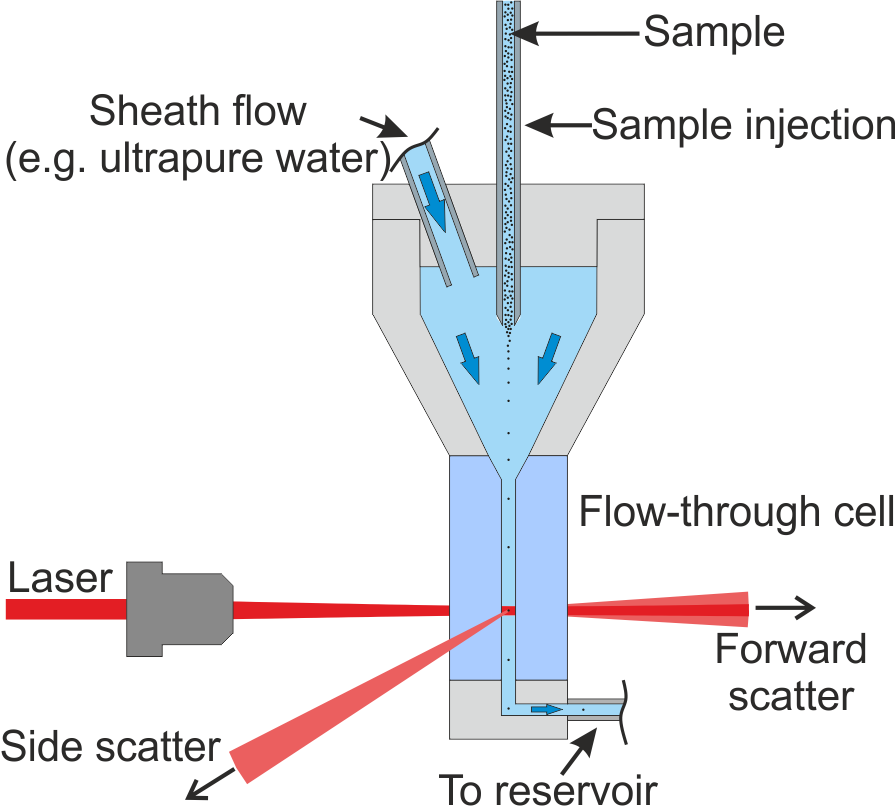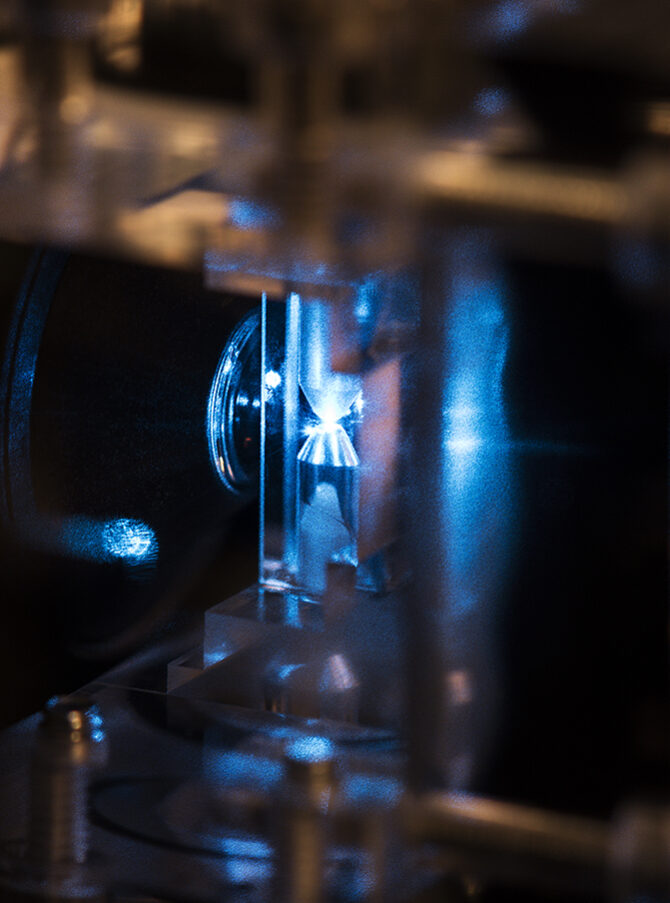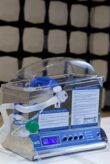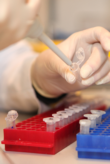New type of measuring system determines nanoparticle concentration – successful transfer of technology from PTB to industry
Nanoparticles are real allrounders. In the field of medicine, for example, one interesting application involves using nanoparticles to deliver drugs or vaccines deep into the body to precisely where they are needed. For such purposes, it is essential to acquire the most accurate information possible on the concentration of these minute particles. With this aim in mind, the Physikalisch-Technische Bundesanstalt (PTB) and the Berlin-based instruments manufacturer LUM GmbH have collaboratively developed a novel type of high-accuracy analytical measuring system. This system measures the light scattered by each single nanoparticle in various directions and is more accurate than the measuring systems available to date. It works very quickly, and with a particle size range stretching from approximately 40 nm to around 10 µm can be used in a very wide range of applications. A global pharmaceuticals company was among the first to take delivery of one of these instruments for use in developing a vaccines. A major German research institution has also acquired this new system.

In the single particle counter, the suspension is injected with a cannula into the conical area of the Flow-through cell and then accelerated through the taper and the surrounding sheath flow . This separates the particles along the direction of flow and they pass the laser focus predominantly one by one. For each particle, the scattered light is measured in the direction of the laser beam (forward scattering) and perpendicular to it (sideward scattering).
The prefix “nano” refers not only to the size of particles (less than 100 nm), it also signals a radical change in a number of particle properties that occurs precisely because of the small scales involved: nanoparticles exhibit very different optical, electric or magnetic properties than those seen in larger particles of the same material. These properties are exploited, for example, by producers of sunscreens, functional inks or quantum dots (nanometer-sized material structures, usually made of semiconducting material, whose properties can be individually tailored as required). And in the medical field, nanoparticles represent a source of great hope. They could, for instance, serve as vehicles to help drugs overcome biological obstructions such as the air-blood and blood-brain barriers. Researchers are using nanoparticles to try and deliver cancer drugs straight to a targeted tumor or vaccines directly to the site of greatest positive effect.
Nanoparticles place great demands on the measuring technology required in the areas of product development, product quality control and, not least, product risk assessment. For these tasks, the problem is increasingly not so much measuring the particle size but also measuring the number and concentration of particles. With this in mind, PTB and LUM GmbH collaborated in a technology transfer project supported by the German Ministry for Economic Affairs and Energy where they pursued a new approach to develop the measurement principle of a single-particle light scattering photometer.
This technology can produce high-resolution distribution and concentration determinations of nano- and microparticles in suspensions and emulsions. Besides exhibiting high accuracy, the system can also be used in a very wide range of applications (for particles from 40 nm to 10 µm) and it is extremely fast, with the ability to analyze up to 10,000 particles per second. The fundamental technology at work here is known as single-particle light scattering (SPLS). Here, the intensity of the light scattered in various directions by each individual nano- or microparticle is measured by the instrument. To get the particles to line up so that they move one by one past the measuring device, the technique of hydrodynamic focusing is applied: a so-called sheath flow arranges the particles in a desired direction, which then march single file through the center of the measuring cell. This technique has for years been used very successfully for flow cytometry, with which things such as body cells can be counted individually and rapidly.
The new measuring system is capable of analyzing particle suspensions of widely varying composition without having to alter the hardware. Even in cases where the starting concentration is very high, the system can determine extremely small differences in size down to the nanometer scale. Both the overall system as well as individual components, such as specific amplifiers and the special optical arrangement, are based on techniques for which the partner company and PTB have requested patents.
A global pharmaceuticals company in the EU was among the first to take delivery of one of these instruments and will use it for current vaccine developments. A renowned German research institution has also acquired this new system. These two examples demonstrate how developments from joint pre-competitive research can be successfully transferred to current applications.
Contact
Dr. Martin Hussels, Working Group 8.31 Optical Medical Imaging, phone: +49 30 3481-7628, martin.hussels(at)ptb.de
Image © PTB








